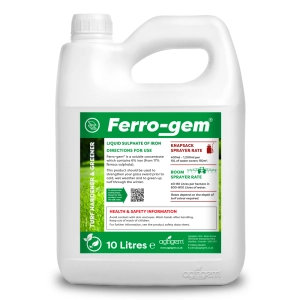With less than a month left of autumn, it is still the perfect time to be giving your paddock some TLC before the winter months arrive.
A common problem which can occur when temperatures become cold and wet is moss. It can become a troublesome factor in paddocks.
Moss competes with the grass blocking light and restricting airflow which in turn prevents the growth of grass and encourages diseases. It will also reduce the amount of wanted grasses for livestock or horses to graze on.
The main factor as to why you might have moss, is poor paddock maintenance, growing and weather conditions. Moss commonly thrives in areas that are shaded, compacted, poorly drained soils which may lay wet for long periods. Soils which are slightly acidic with a pH level of around 5.5 are more prone to moss growth.
The best way to treat moss is in autumn or early spring. Treatment can be done with an iron-based product such as Iron Sulphate or soluble Ferro-Gem. You may also apply a fertiliser which contains iron such as MossTop to do two jobs, fertilise the grass and treat the moss. Moss top although not classed as a moss killer, can significantly reduce the moss population due to its high level of Iron.
Chain harrowing, draining and removing overhanging trees/branches to discourage shady areas is another way to help maintain and prevent moss in your paddock. We also recommend preventing the grass from becoming too short by overgrazing as it can weaken the grass. Livestock should be removed from the area you are treating for 7-10 days.
With good paddock care practices and ideal growing conditions, your field will have little or no moss. Encouraging gentle grass growth by feeding and undertaking regular maintenance will help prepare your grass for winter and help prevent the growth of moss.




